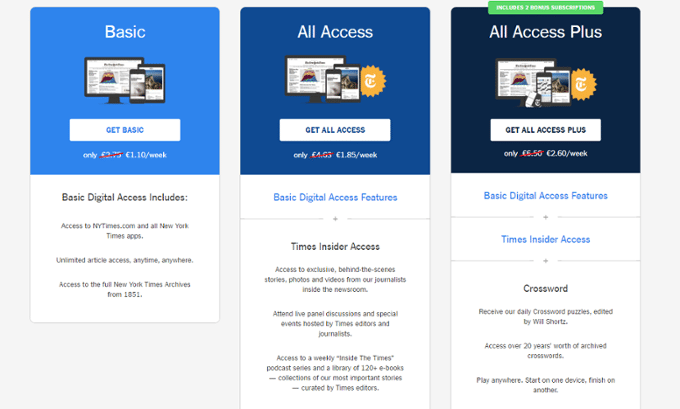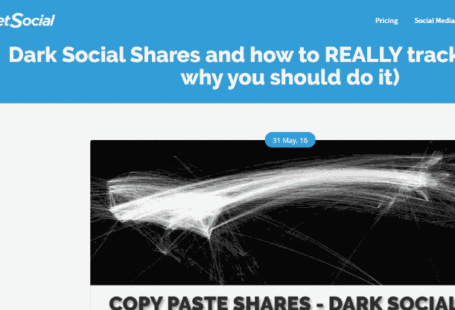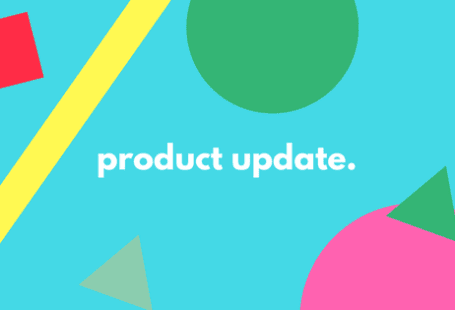After attending several social & digital events, GetSocial’s team thought it would be great to contribute to the discussion. As such, this is the first interview of a new monthly series of talks with professionals that work in the (digital) media world.
For this interview, I invited Johannes Klingebiel, who works in the Innovation department of Suddeutsche Zeitung (SZ), one of the largest daily newspapers in Germany.
 I met Johannes last November during the Web Summit in Lisbon, exactly 1 month after he started working for the SZ. More than 6 months have passed and I thought it would be an incredible opportunity to talk with someone that has both a fresh look into the industry and a chance to influencing it.
I met Johannes last November during the Web Summit in Lisbon, exactly 1 month after he started working for the SZ. More than 6 months have passed and I thought it would be an incredible opportunity to talk with someone that has both a fresh look into the industry and a chance to influencing it.
Hugo Monteiro (HM): Hi Johannes, it’s great to have you here with us!
I’d like to start with a simple question: What’s the objective of an Innovation team working in a media company?
Johannes Klingebiel (JK): I think there are 2 main objectives for an innovation team. First, discovering which new technologies we should be using and finding new channels to publish content. Secondly, adapting the structure of companies that were “print first” or “print only” to the context of the 21st century, which is “print + digital” and “mobile first”.
HM: In the publishing world, what are the biggest challenges or difficulties about innovating?
JK: Well, I love challenges! (laughs)
The first challenge we usually face is a structural challenge. Big companies are slow by definition, making it often hard to change things related to the company’s structure. Integrating new technologies into a company’s workflows is a slow process that takes a lot of time.
Money is also a problem, of course. Publishing isn’t the richest industry at the moment. We can’t just go out and buy 3 or 4 startups to acquire or develop new technologies in the same way that big technology companies such as Google, Facebook, or Amazon do.
Another thing that is quite complex is to innovate while minimizing the risk of creating too much aversion inside the organization. People don’t like to change and being careless in presenting and implementing innovation will create detractors that make the process even harder.
HM: Can you give an example of changes your team is working on right now?
JK: Currently, we’re mostly focused on finding new channels and testing new ways to bundle our content. Our most recent success was something quite simple, actually: we launched a recipe platform for our readers and the traffic went through the roof. Readers loved searching the recipe archive. It’s nothing really high-tech or incredibly innovative, but it’s a great example of a simple change that gave our audience something they really liked in an attractive digital format.
Besides discovering these new ways of presenting content, we also have to find the best way to monetize them.
HM: Regarding monetization, there is an industry-wide discussion about digital subscriptions for newspapers. Do you believe that innovating is critical in convince readers to pay for subscriptions?
JK: Yes, definitively. In my opinion, we have to really develop online subscriptions in a different way than printed subscriptions, such as thinking about our reader’s needs and developing products to address them. We need to ask different questions: what can we deliver better, as a digital platform, than other newspapers in Germany? What are our niches? What are our strengths? How do we bundle this into products, channels, and content that the readers consider being interesting? How to make those readers access that content and pay for our subscription in a way that they like and want to? This is what we need to figure out to be successful in selling our digital subscriptions.
HM: As a curiosity, the other day I was checking the digital subscriptions for the New York Times (NYT), something they do quite well and are extremely successful at. You can subscribe to one of three tiers and they use their crossword section as the main offer for the most expensive one, something I would never even dream of.

JK: Yes, it’s a weird way to upsell, but it seems to work, right?
HM: I suppose that, since we’re millennials, we don’t care much for crosswords, but it does make a lot of sense for their target audience!
HM: Newspapers have become a mix of very different sensibilities: printed paper vs digital presence, journalism vs advertisement, public service vs business goals. Do you see yourself as an element of disruption or harmonization, regarding these balances?
JK: We have to be both, actually. For example, take journalism vs advertisement. We’re currently working on helping our advertisers produce sponsored posts and advertorial and you really need to rethink the sharp borders or lines between editorial content and advertising inside a publication. You have to somewhat soften those lines, but not too much.
Also, one thing journalists are really bad at is how to market yourself. This happens because no journalism school is teaching this. We not only need to know how to make our platform appealing to advertisers but also how can we advertise ourselves on different channels.
There’s also the public service vs business goals, where you want to do proper journalism and serve the community but you also need to find the money to pay for this public service.
So, on a weird way, we’re trying to do both by, on the one hand, disrupting the way journalist think of themselves and, on the other hand, harmonizing the relationship between journalism, advertising, and marketing.
HM: As a follow-up to the last question, what would be the goal you want to achieve to consider yourself successful in your job?
JK: Well, that’s a hard question. In the short term, I would like to have the digital business of SZ be self-sufficient financially. That would be a very good indicator of a job well done. Then there’s the vision of our company, where we see ourselves in the next 5 years, what channels and technologies we should experiment with and embrace. The biggest mistake we could make is to stay reactionary to every evolution that comes our way. I would like to take a part in avoiding that outcome.
HM: The phrase “Data is the new oil” was coined back in 2006 when Facebook was still in its infancy. Today, the 5 most valuable companies in the world have data as their main (or one of their main) core businesses. This inspired several discussions in the publishing industry about newspapers monetizing their readers’ data as an extra source of income. Considering that Germany is one of the countries with stricter privacy laws, do you think SZ can or should try to present its readers with the choice of paying a subscription versus providing personal data?
JK: That‘s a hard question and I think there are multiple aspects to the use of data for news organizations. But the main one I think is that every data point the Süddeutsche could collect is already known to bigger ad networks, such as Google Ads or–of course–Facebook. So, I don‘t really see any value in offering such an option, at least not enough to make up for a subscription. But when talking about “data is the new oil”, I‘d like to add “context is the engine”. And I think news organizations should focus not on collecting lots of data, but collecting relevant data from readers and the newsroom and using both to have more contextualized news and advertisement.
HM: To wrap up this interview: what are the major trends that will influence the publishing industry in the near future?
JK: The biggest trend around is artificial intelligence and machine learning algorithms. We need to understand how can we apply that technology to our content, platforms, and advertising.
Another interesting thing is to see how the social media space is going to transition from an open space to a more controlled and closed environment, such as Instant Messaging platforms.
Finally, I believe print is going to die. At least, the more traditional newspapers are going to disappear. There are going to be some weekly newspapers, but the daily printed paper is something that will gradually cease to exist in the next 5–10 years.
Interested in knowing more about Dark Social & Analytics?
[su_button url="https://getsocial.io" target="_blank" style="flat" background="#21D2B5" color="#ffffff" size="7" wide="no" center="yes" radius="auto" icon="" icon_color="#FFFFFF" text_shadow="none" desc="" onclick="" rel="" title="" id="" class=""]SIGN UP FOR FREE[/su_button]





